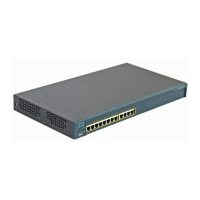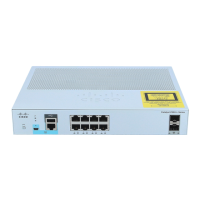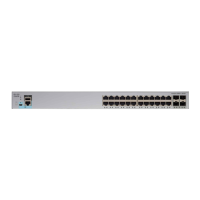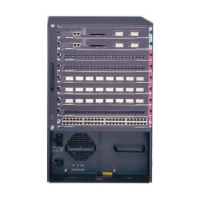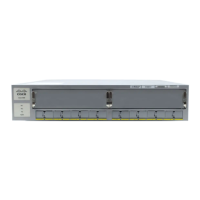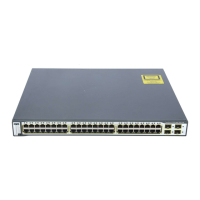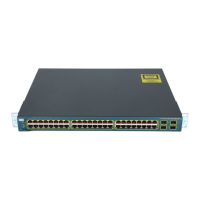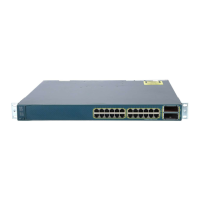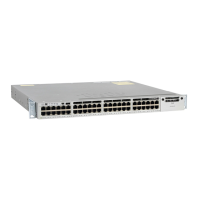Chapter 1 Overview
Network Configuration Examples
1-14
Catalyst 2900 Series XL and Catalyst 3500 Series XL Software Configuration Guide
78-6511-05
Small to Medium-Sized Network Configuration
Figure 1-2 shows a configuration for a network that has up to 250 users. Users in
this network require e-mail, file-sharing, database, and Internet access.
You optimize network performance by placing workstations on the same logical
segment as the servers they access most often. This divides the network into
smaller segments (or workgroups) and reduces the amount of traffic that travels
over a network backbone, thereby increasing the bandwidth available to each user
and improving server response time.
A network backbone is a high-bandwidth connection (such as Fast Ethernet or
Gigabit Ethernet) that interconnects segments and network resources. It is required
if numerous segments require access to the servers. The Catalyst 2900 XL and
Catalyst 3500 XL switches in this network are connected through a GigaStack
GBIC on each switch to form a 1-Gbps network backbone. This GigaStack can
also be configured as a switch cluster, with primary and secondary command
switches for redundant cluster management.
Workstations are connected directly to the 10/100 switch ports for their own
10- or 100-Mbps access to network resources (such as web and mail servers).
When a workstation is configured for full-duplex operation, it receives up to
200 Mbps of dedicated bandwidth from the switch.
Servers are connected to the Gigabit module ports on the switches, allowing
1-Gbps throughput to users when needed. When the switch and server ports are
configured for full-duplex operation, the links provide 2 Gbps of bandwidth. For
networks that do not require Gigabit performance from a server, connect the
server to a Fast Ethernet or Fast EtherChannel switch port.
Connecting a router to a Fast Ethernet switch port provides multiple,
simultaneous access to the Internet through one line.
